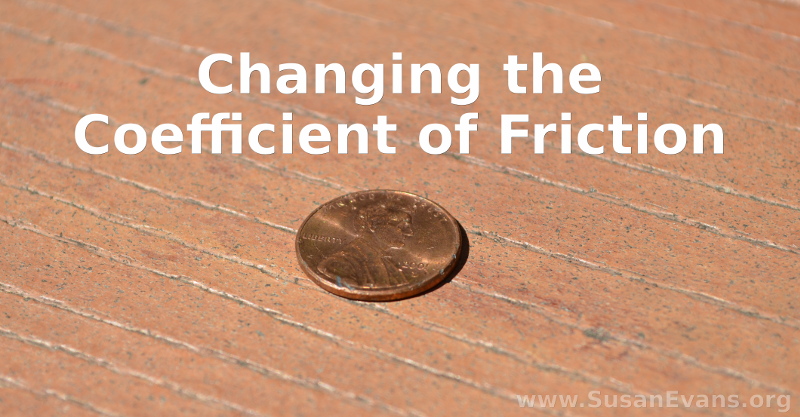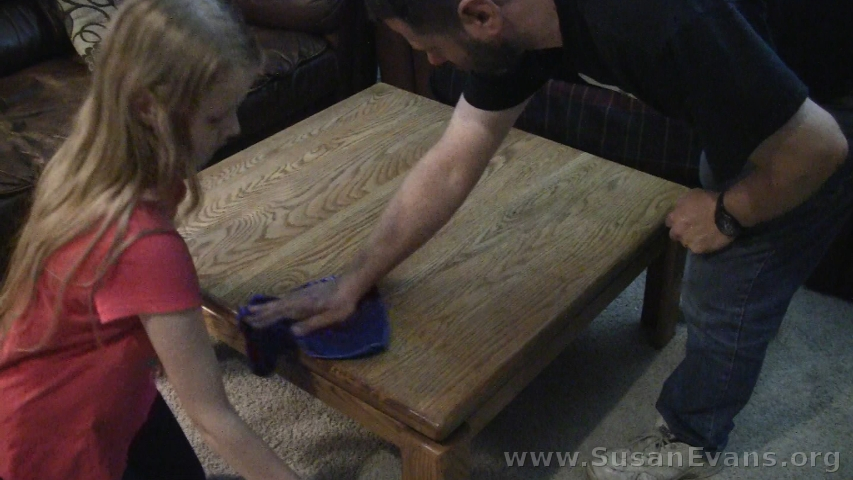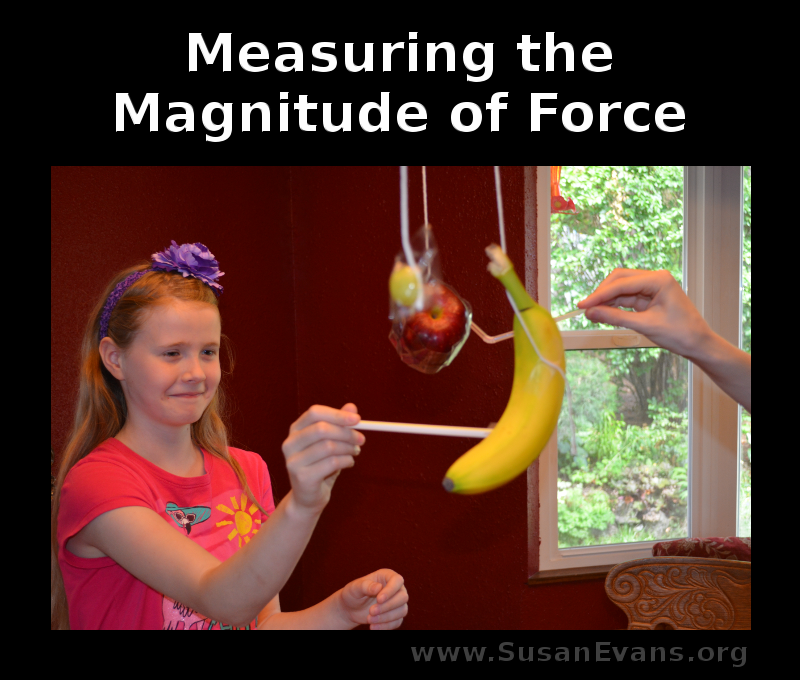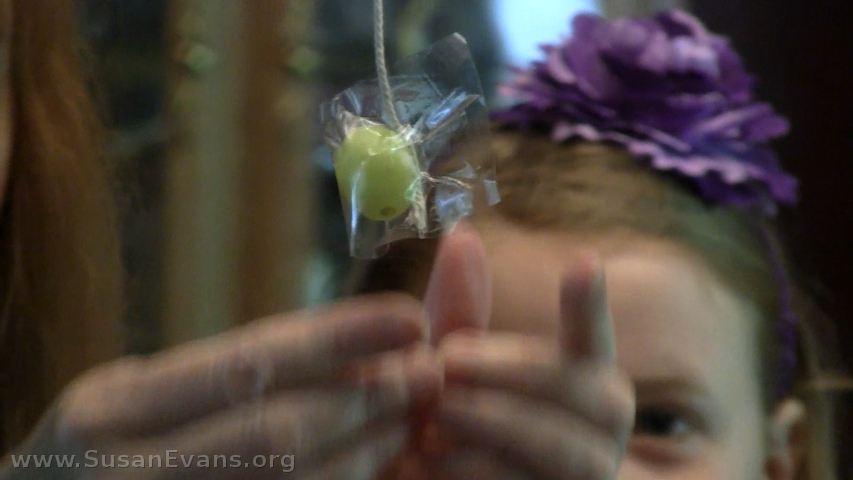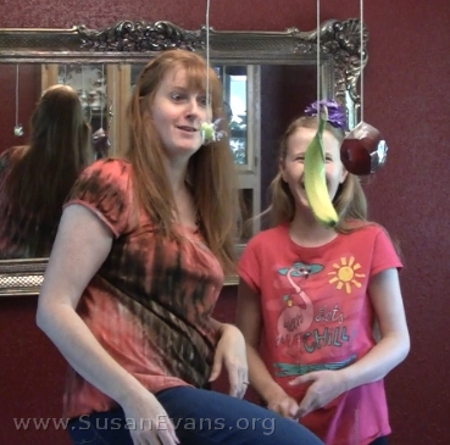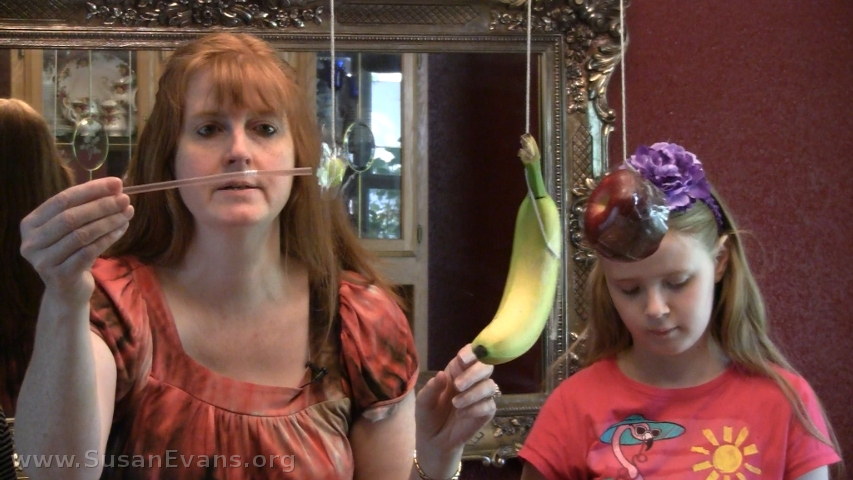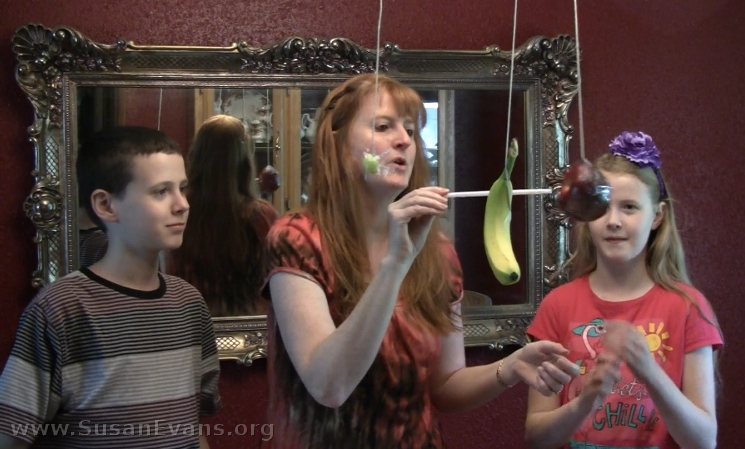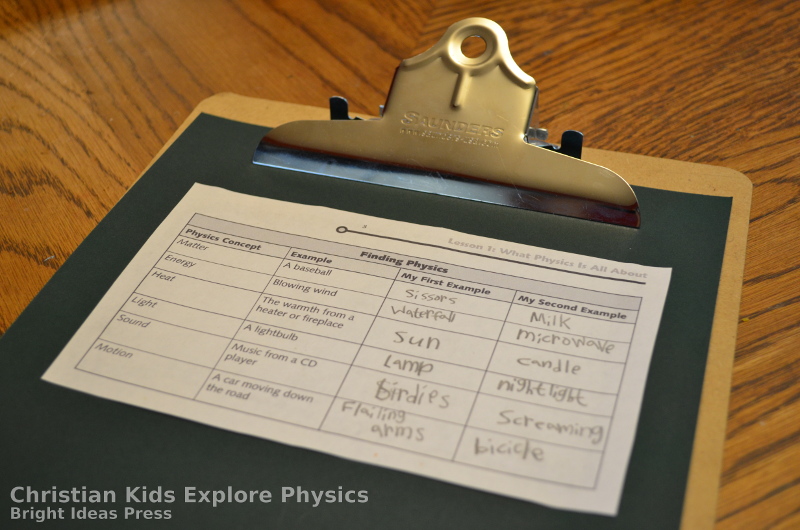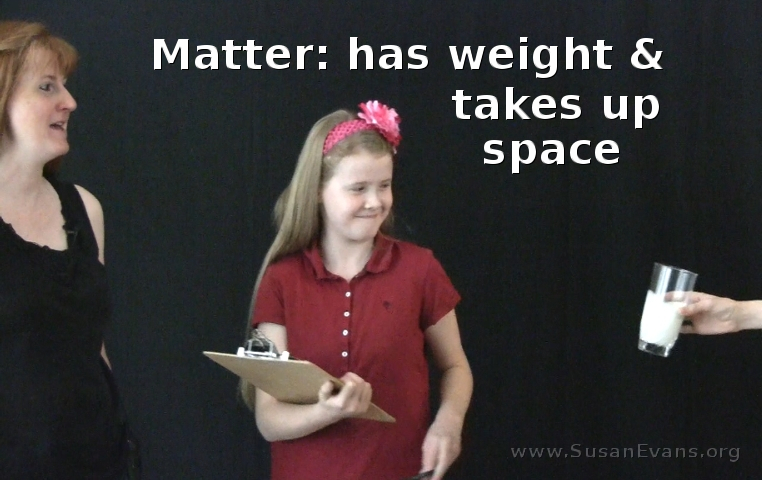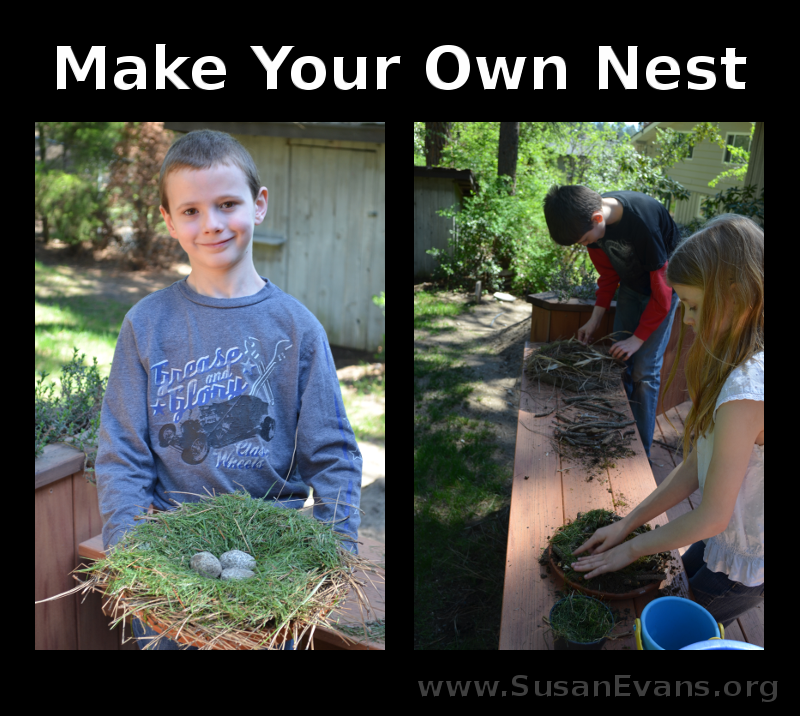Today we are doing an experiment about changing the coefficient of friction. We will be swooshing a penny and a book across an unpolished table. Then we will polish the table and try it again.
Friction is resistance that keeps an object from moving forward. As you can see in the video, our coffee table has seen better days–it is battered and has lots of tiny grooves and dents. This provides a surface that is full of friction to cause a penny or book to slow down while being slid across a table.
How to do the friction experiment:
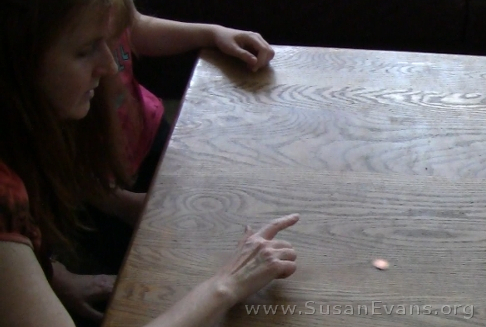 This post contains affiliate links. I was compensated for my work in writing this post.
This post contains affiliate links. I was compensated for my work in writing this post.
This is how we conducted this friction experiment from Christian Kids Explore Physics by Bright Ideas Press:
Step 1: We slid a penny and a book across an unpolished table. We noticed that the penny got stuck as it didn’t want to slide across a table full of nicks and dings.
Step 2: We polished the table with furniture polish. Using a soft rag worked better than using a paper towel, as far as shining the table. The reason the table never looked visibly shiny is that there was no varnish left on the poor coffee table. Even then, the table became more slippery when polished.
Step 3: We slid the penny and the book across the polished table. This time we noticed that the penny had less friction as it slid across because there were fewer obstacles slowing it down.
My kids went next door to slide the penny on the neighbor’s waxed wooden floor. The penny slid around with way more speed! Even the neighbor’s dog had trouble walking on such a frictionless surface!
Then my husband polished one side of the coffee table and not the other, and there was a visible difference in speed when he flicked two wooden coins across the table. The polished side went noticeably faster and flew off the table!
